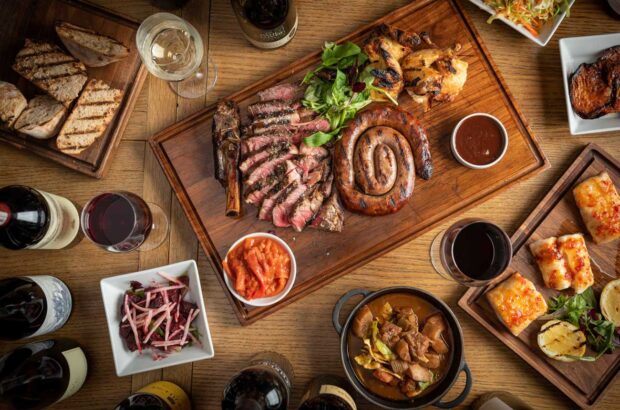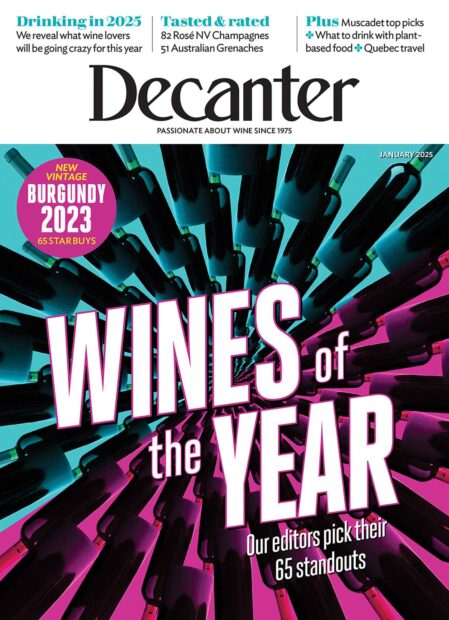On the day Plaimont Producteurs’ 2016 Rencontres Ampélographiques opens, Andrew Jefford traces the history of South West France’s leading player.
Why hasn’t André Dubosc been given the Légion d’Honneur? This now-retired Gascon wine innovator certainly deserves France’s national garland as much as the hordes of well-paid civil servants and industrialists who queue up every July (654 recipients this year). Has anyone in French wine had a more transformative effect on his home region?
I visited Plaimont Producteurs in St Mont in early August 2016 as part of my search for France’s greatest co-operative. André Dubosc finally left Plaimont in 2006 and I haven’t seen him since then, though I enjoyed catching up with the co-op’s present managing director, the energetic Olivier Bourdet-Pees. You can’t, though, survey Plaimont without talking about Dubosc’s legacy, which is astonishing.
How can I put it most simply? In terms of wine production, the region was dying when Dubosc arrived in 1973. It produced white base wine to be distilled into Armagnac – but in the post-digestif era, demand had collapsed.
Since the region is a polycultural one, this wouldn’t have been a total catastrophe; poultry and cereals would have seen the locals through. But viticulture has long roots here; the local red wine is particularly healthful, as Professor Roger Corder has shown in his book The Red Wine Diet; and there are hidden resources of vine diversity which have only come to light recently. To have lost all that would have been a tragedy.
“We have the impression that no one knows us,” said present-day co-operative member Régis Dupuy (who manages to cultivate 27 ha of vines as well as grow organic cereals and look after 8000 organic chickens on his own, astonishingly enough, using only seasonal help). “We’re too obscure here. So we work together or die.” Lying at least two hours from either Bordeaux or Toulouse, and with vineyards falling into both of the new giant regions of Nouvelle Aquitaine and Occitanie, this ‘lost’ zone of Gascony has all the geographical cards stacked against it.
Dubosc, and Bourdet-Pees since him, has turned this to advantage. Dubosc managed to stitch the co-operative forces of the region together, making Plaimont the leading wine producer in the South West, with 800 members, 5,300 ha and almost 200 employees. It produces 98 per cent of the AOP of St Mont, as well as over half of Madiran and Pacherenc du Vic-Bilh, and almost half of the hugely successful Côtes de Gascogne IGP. And it does this well: see my tasting notes below.
Dubosc, furthermore, was full of prescient ideas. The cooperative itself has become the owner of almost 300 ha – so that this land can be rented out to younger co-operative members with a strict quality challenge, to keep them involved and stimulated rather than drifting off to aerospace jobs in Toulouse. Every grower, too, is encouraged to create a small ‘grand vin’ section of their most propitious vineyards which they manicure, with the aim of qualifying for that year’s edition of Plaimont’s top blended red and white wine, Le Faîte. Everyone, that way, gets a stake in the summits as well as the lowlands. The final blend is chosen by visiting sommeliers or writers, to ensure objectivity.
All Plaimont members, moreover, have to give one day a year per 1.5 ha of vineyard to promotional activities – which meant, in the early days, that older growers who had never left their village suddenly and surreally found themselves in Paris or New York, wearing the obligatory Plaimont black beret, talking to consumers and drinkers with their delicious south-western twang. The growers loved it – and so did the consumers. If members don’t want to (or can’t) get involved, you pay a small ‘fine’ – which helps subsidise the promotions. And the berets? They turn a geographical disadvantage (living in deepest rural France) into a marketing tool; indeed ‘Beret Noir’ is now a Plaimont brand.
Then there’s hidden Gascony’s astonishing patrimony of ancient vines. When I was recently in St Mont, I drove between the vineyards with Nadine Raymond, the cooperative’s talented young research co-ordinator. “Come and look at this,” she said, stopping in a quiet country lane. And there, romping up the bushes and trees which divided the fields, were true wild vines (Vitis sylvestris) of a previously unknown strain; some, indeed, think that the Petit Manseng may be the cultivated vine which is genetically closest to ancestral wild vines.
André Dubosc always insisted on giving those growers who had very old parcels a subsidy to keep the ancient vines alive, even though they were usually of mixed and sometimes unknown varieties, and didn’t all produce useful grapes. (When the rules were written for St Mont, he also insisted on obligatory hand-harvesting – since he knew that if machine harvesting was possible, growers would begin to abandon the hard-to-harvest old hillside sites.)
Since then, several parcels of extraordinary antiquity have come to light in St Mont, including one which has now become France’s first ‘vegetal’ historical monument, the Pédebernade vineyard at Sarragachies, thought to date back to 1830 or so. Nadine Raymond and her colleagues have been propagating promising plant material from this and other vineyards, and are hopeful for the prospects for a variety called Tardif as well as for Manseng Noir (the latter is now creeping into commercial production). They’re also investigating varieties of Tannat which produce lower levels of alcohol than those propagated at present. This fascinating genetic patrimony has inspired Plaimont to organise an annual two-day conference called the Rencontres Ampélographiques: the 2016 edition opens today.
There’s a huge amount, in sum, to fire up wine enthusiasts. At the other end of the spectrum, Plaimont produces no fewer than five million bottles every year of a single blended white Côtes de Gascogne called Colombelle L’Original: it’s a simple and inexpensive wine, but delicious, and must bring much drinking pleasure to those wine drinkers who never want to read a word about wine, couldn’t care less about appellations, and have no interest whatsoever in grape varieties. In buying, drinking and enjoying in such volume, of course, they do more than any of us geeks can manage to keep the region’s wine-growing traditions alive.
And all of that is the great Dubosc legacy. So why no Légion d’Honneur?
Tasting Plaimont wines
White wines
Combebelle, L’Original, Côtes de Gascogne, 2015
Bottled under screwcap at 11%, this blend of 80 per cent Colombard (given a full 24 hours of skin maceration) with 10 per cent each of Sauvignon Blanc and Ugni Blanc has, happily, no reduced or sweaty aromas – which some Côtes de Gascogne is prone to – but rather a set of clean, fresh orange-and-tropical-fruit scents with a honeyed overlay, and a crisp, zesty passionfruit flavour that finished cleanly (just 5 g/l residual sugar): highly skilled work at these enormous volumes. 88
Les Vignes Retrouvées, St Mont, 2014
A gorgeous nose of buttered pineapple and lime zest, then a leaner palate than the nose suggests, with mouthwateringly fresh, vivid, crunchy, pithy, faintly bitter-edged flavours. I’ve long thought that this blend of 80 per cent Gros Manseng with 15 per cent Petit Courbu and five per cent Arrufiac is one of the best-value aperitif white wines in the world, and the 2014 vintage doesn’t disappoint. 89
L’Empreinte de St Mont, St Mont, 2014
This is the big brother of Les Vignes Retrouvées, with barrel-fermentation for the Petit Courbu and longer on lees for the whole blend. The aromas are more subdued and subtle, with more soft honey and cream, and the palate is much denser and richer, too, with mealtime wealth of flavour: less pithy bitterness, and more roundness and length. 90
Cirque Nord, Grande Cuvée, St Mont, 2014
From a clay-soiled, high-sited parcel facing north-west and barrel fermented in well-seasoned, neutral casks, this blend of 50 per cent Gros Manseng with 25 per cent each of Petit Manseng and Petit Courbu has magnificent aromatic complexity and pristine fresh fruits, a saline edge and plenty of perfumed yet dry poise. 91
Barriques d’Or, Pacherenc du Vic Bilh, 2014
Principally made from Petit Manseng picked in mid-November, this refreshing dessert (or sweet aperitif) wine has a rich, pollen-and-honey scent and a luscious yet zesty palate (lemon rather than tropical fruits this time). 89
Red wines
Moonseng, Côtes de Gascogne, 2015
This light (13%) red gives Manseng Noir its first commercial outing, blended with 60 per cent Merlot. It’s dark yet refreshing: inky and ferrous yet smooth and with bright acidity: a perfect bistro red for serving slightly chilled. 86
Beret Noir, St Mont, 2014
Things get a bit more serious with the ‘black beret’: 70 per cent Tannat with 15 per cent each of Pinenc (Fer Servadou) and Cabernet Sauvignon. It’s mildly earthy and savoury on the nose, with a taut, sour, searchingly savoury palate. Not tannic, but concentrated and gathered: proper food wine. 89
Monastère, St Mont, 2012
From the limey clay soiled vineyards of St Mont’s own monastery, now owned by Plaimont itself, this needs decanting to open up its slabby, meaty scents (typical of Tannat in clay) and give its weighty flavours a chance to grow in articulacy. The 80 per cent Tannat is blended with Pinenc and Cabernet Franc this time. Despite its gratifying muscle tissue, this is still not a forbiddingly tannic wine: rich softness, relatively muted acidity, plum and black cherry fruit. 92
La Madeleine, St Mont, 2015 barrel sample
Plaimont produces four single-property red St Monts — from Ch St Gô, Ch de Sabazan and Ch du Bascou and La Madeleine. The last of these is a small plot of Tannat grafted onto ancient Noah vines planted in 1880. At this unfinished stage, the 2015 has an almost burgundian nose of dark cherry fruit gently shaped by the oak in which it’s aging, with pure, deep fruit flavours of surprising polish and succulence for a Tannat-based red. Very promising. 91-94
Vignes Prephylloxeriques, St Mont, 2012
Produced in tiny quantities (just four casks), this wine is made from a half-hectare of vines, almost all of them Tannat, planted in 1871 on sandy rather than clay soils. Needs decanting to freshen up a slight reduction, but you’ll find it a wine full of drama: deep and vivid to open, with an almost crunchy mid-palate, softening and filling with warmth as it rests on the tongue. It doesn’t have the almost sticky tannic weight of Tannat grown in clay, but is softer-grained and more poised, with a smoky-bacon savouriness. 92
More Jefford columns:

Jefford on Monday: Building a region
Alsace's 100-year appellation plan...

Jefford on Monday: Beyond best
Andrew Jefford is giving up the chase...

Jefford on Monday: Debating Diam
A bright June day in Chablis gave me a chance to talk (and taste the pristine, beautifully classical 2012s) with

Jefford on Monday: Of Jellyfish and Guardsmen
What do we mean by 'a grape variety' or cultivar? Does its name on a label tell us about the

Jefford on Monday: Shades of Orange
Jefford explores the taste of orange wines...







